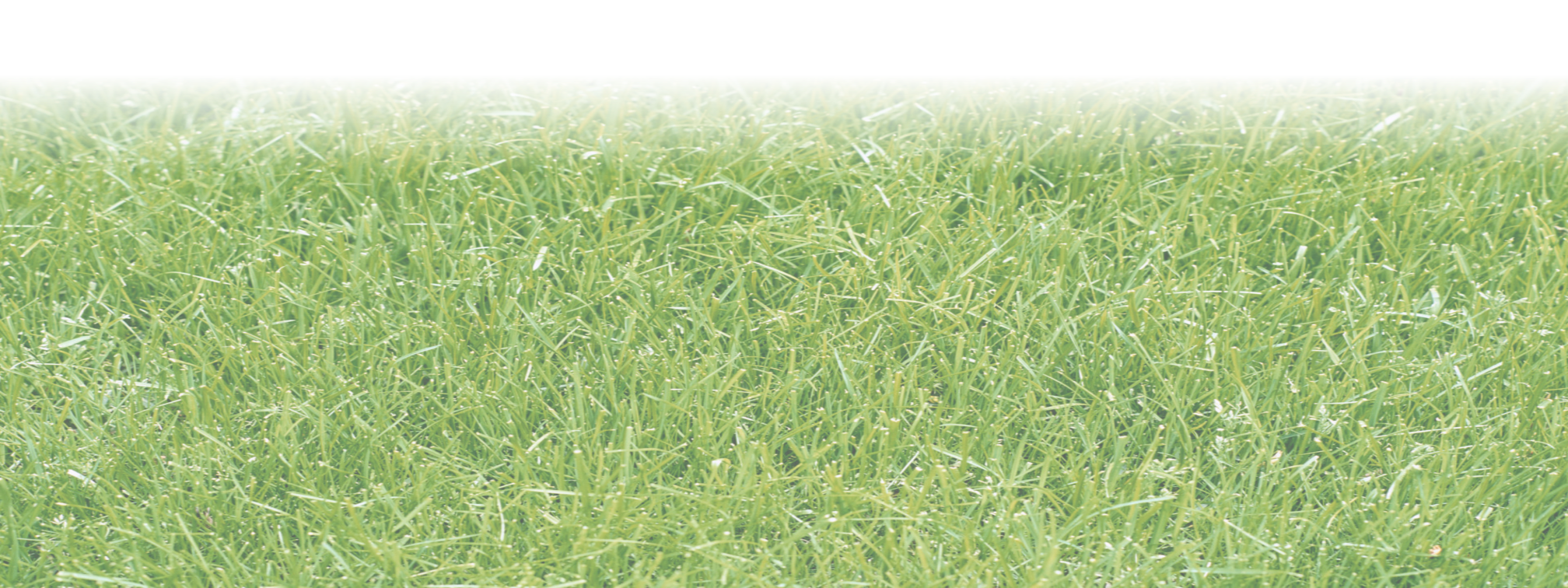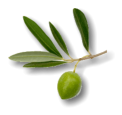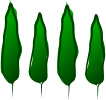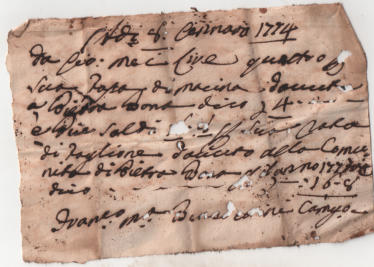






























History
What do we know about the history of our property? The sad fact is that we don’t actually know very
much - it’s something we’d love to know more about - we’ve found some bits and pieces of information,
but we’re on a quest to try and find out more and to fill in the gaps. In the meantime, here is what we do
know about what used to go on here.
We estimate that the farmhouse is at least 250 years old (it may be older, but we are fairly certain that it
is at least this old). What is now the guest apartment used to be the ‘cantina’ - a space underneath the
house for storing tools and harvested crops and housing animals.
In 2017, while doing some work on the house, Stuart found a tiny, folded up piece of paper stuffed into
the original lintel of the window in the room we now use as an office. It turned out to be a note, written
in 1774.
The note is a little hard to decipher (more because of the 18th century hand writing than because of the
language), but it seems to be some sort of notice regarding the payment of a mill tax owed to the
community of Pietrabuona (probably a charge for using what would be a communal mill in the village
to grind chestnut flour). So not a charming love letter, or a gruesome confession (thankfully!), but a
mundane invoice of sorts. Nevertheless, we were thrilled at the discovery and feel that little bit more in
touch with our house and its history.
We also discovered, through various searches in local archives, that our house has a (admittedly very)
tenuous link to the Medici family, in that the landowner in the 1830s was a direct descendant of a man
named Lorenzo Pagni Bordoni, who was Secretary to Cosimo I of the Medici family. You can read our
blog post about our historical researches if you are interested in the full story (or as much of it as we
know).
The land around the property is divided into different segments with different designated uses. The
terraces behind the house are, and have always been olive grove. In front of the house, the area is
marked as ‘nursery’ - this is where we now have our vegetable beds. To the south side of the house is
an area of land marked as ‘orchard’, and most of the rest of the land is coppiced woodland or chestnut
woodland.
Chestnuts have a long history in this area, with numerous tiny chestnut houses (metato) dotted around
the countryside, in which a fire would have been lit on the bottom level and the chestnuts laid out to
dry on the upper, mezzanine level prior to turning into chestnut flour. There used to be a metato on the
end of our house, but it was taken down a short while before we moved here because it had fallen into
disrepair and the structure was dangerous.
Quarries
Our closest village is Pietrabuona. The name of which translates literally as ‘good stone’. This is no
coincidence, as the area was extensively quarried in days gone past. Indeed, we have three disused
quarries on our land, at least one of which shows signs of having been a sizeable operation, with several
built up walls still remaining. We believe that this one was the Cava del Rio dell’Asino, named after the
small river that borders our land.
Aerial surveys of the area were undertaken in both 1954 and 2002. A comparison showing the
difference in land use (specifically the terracing of the land) is shown below. (This graphic is taken from
http://www.svizzera-pesciatina.it/it/pdf/Evoluzione%20del%20paesaggio.pdf)













